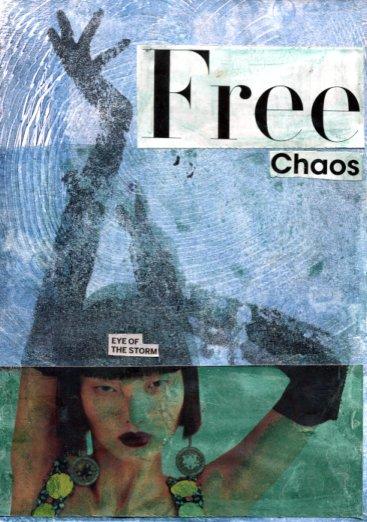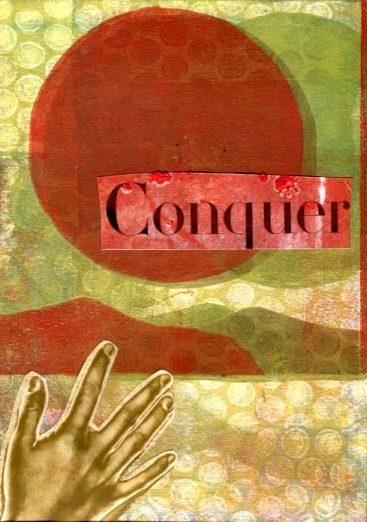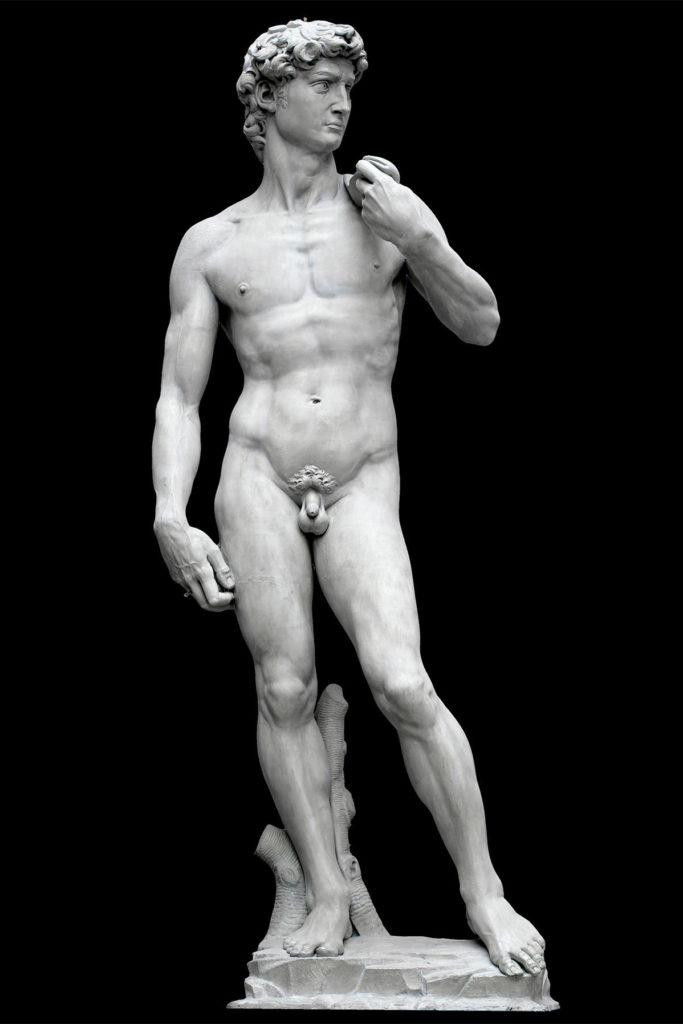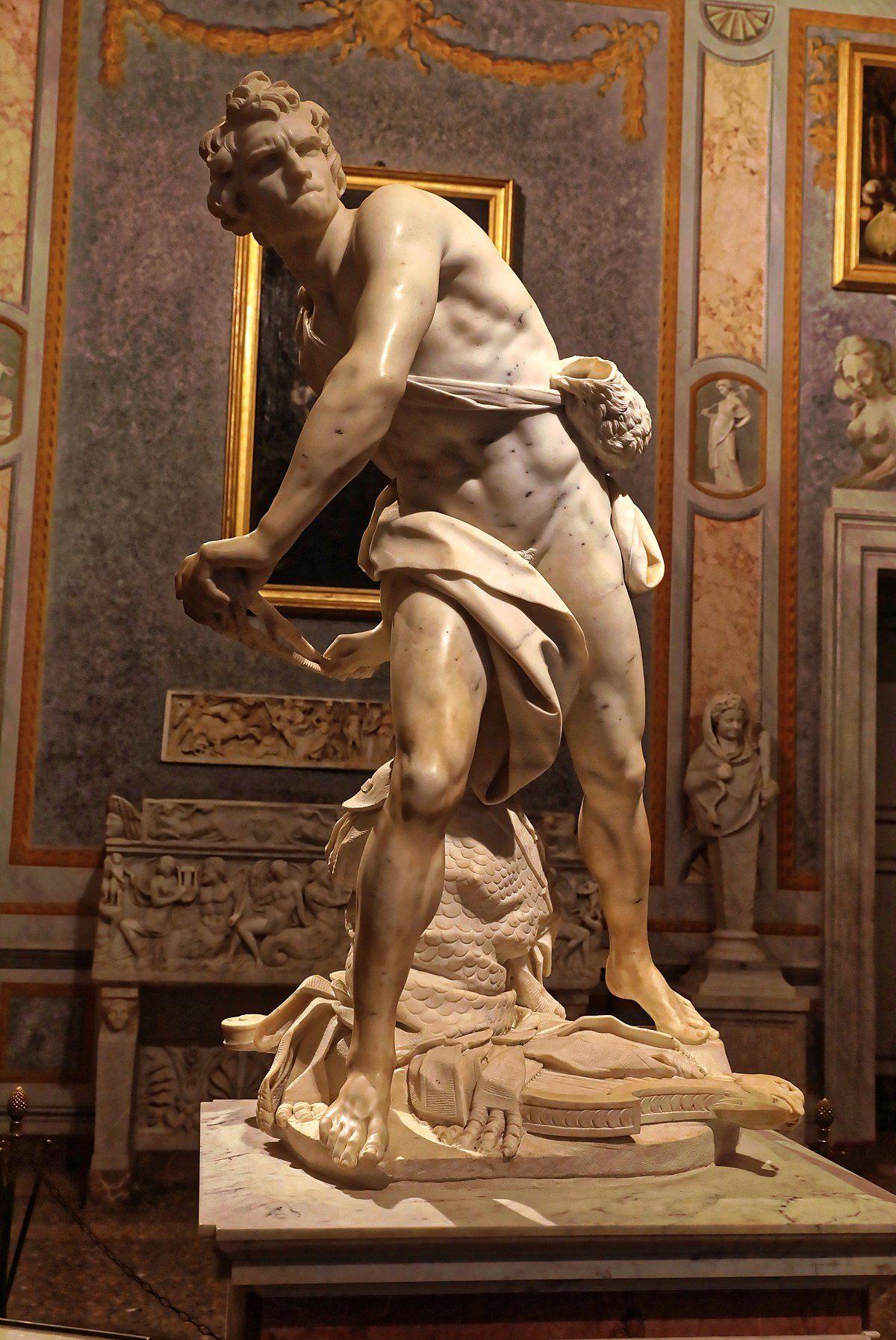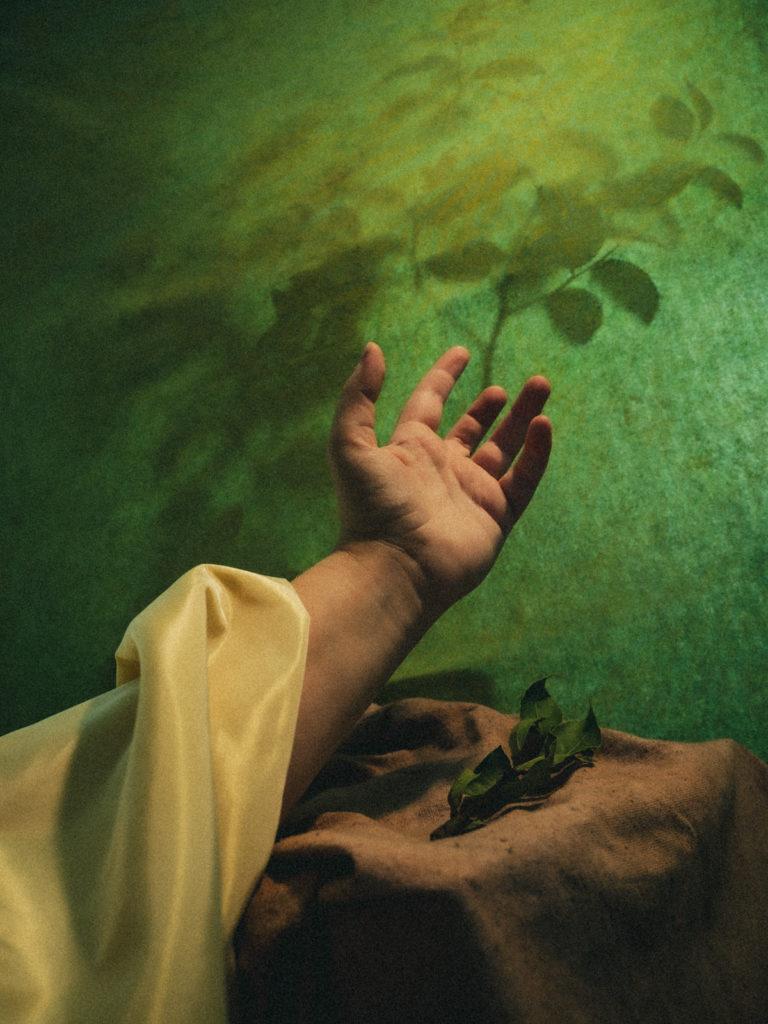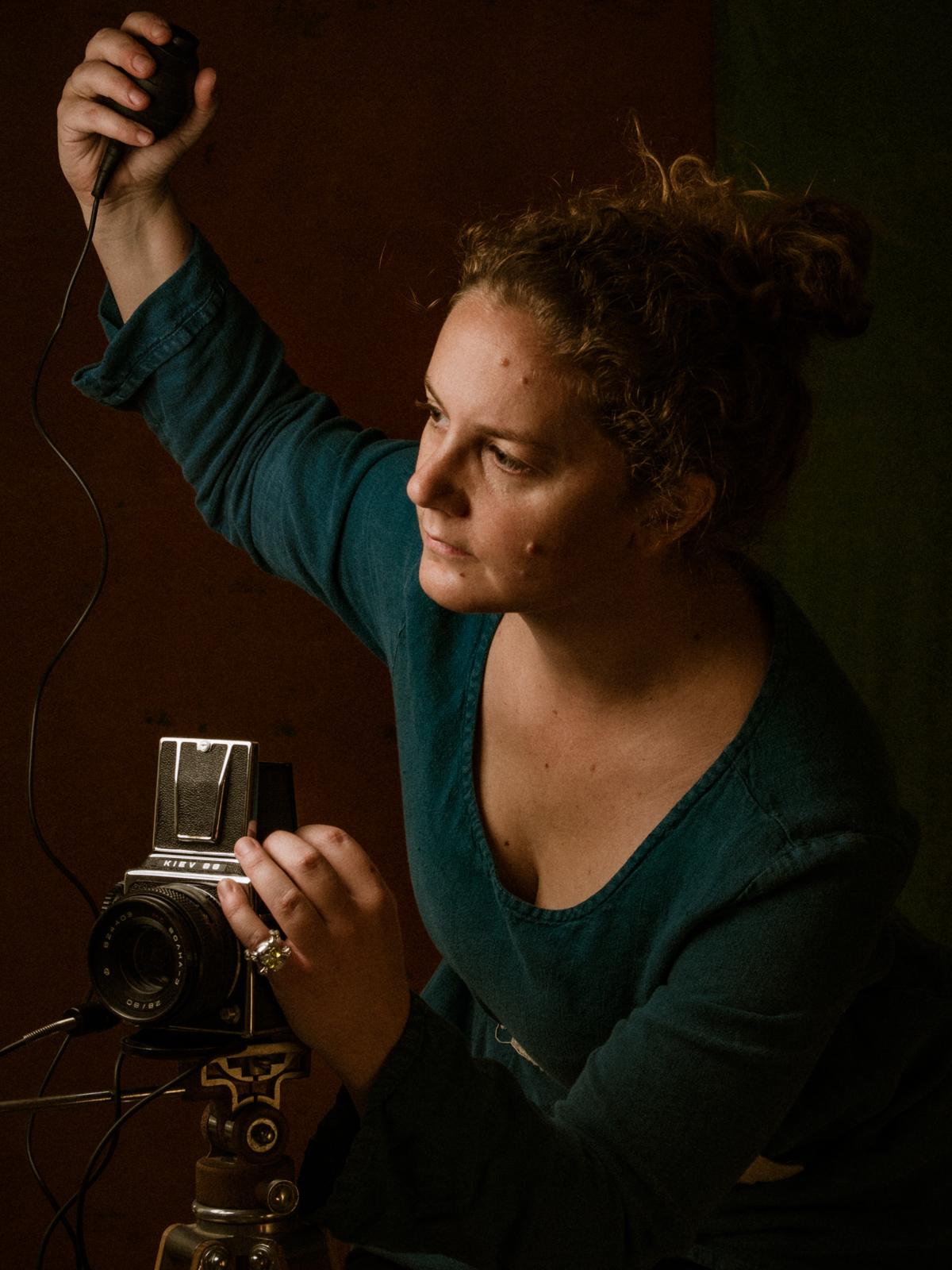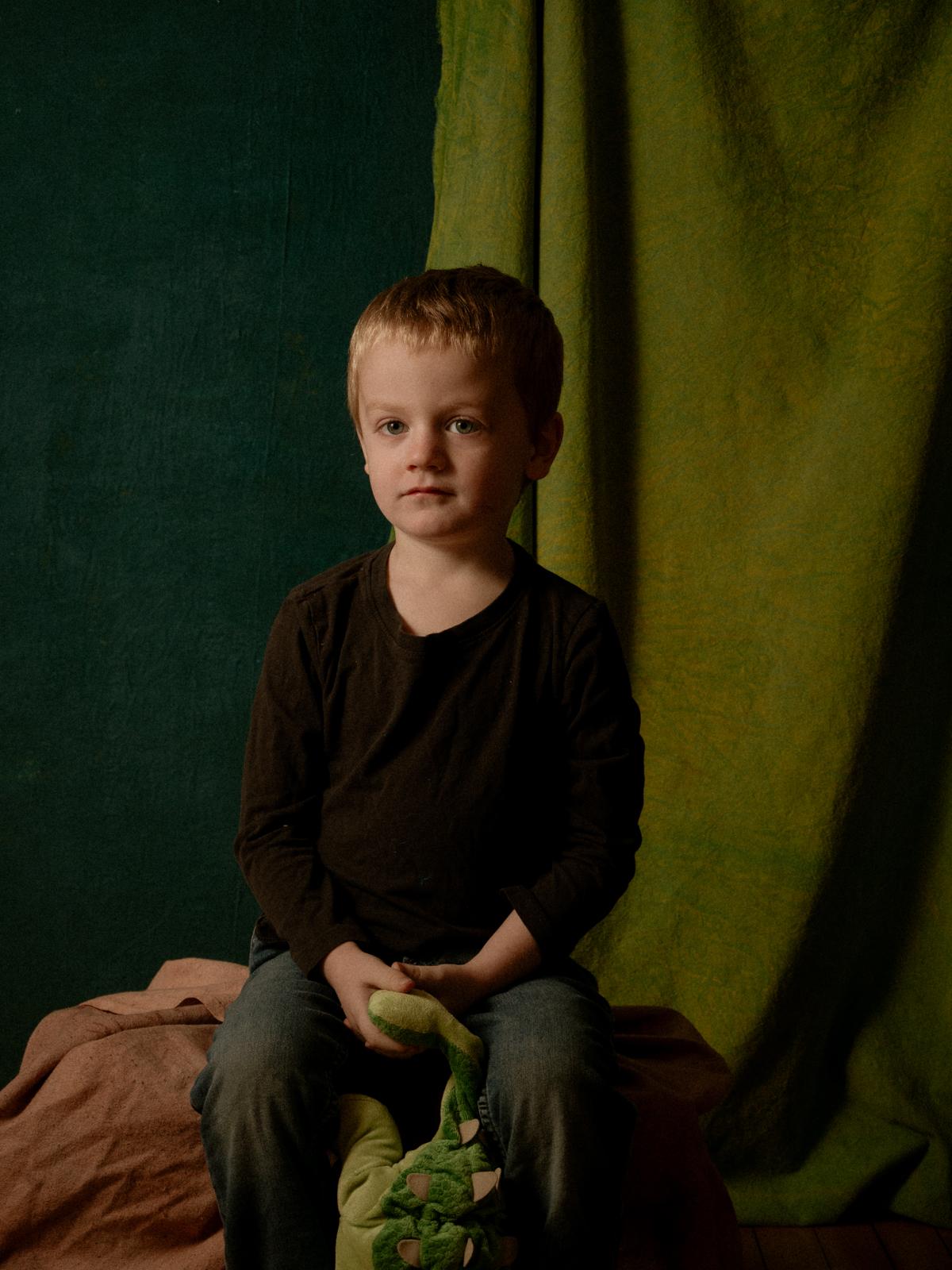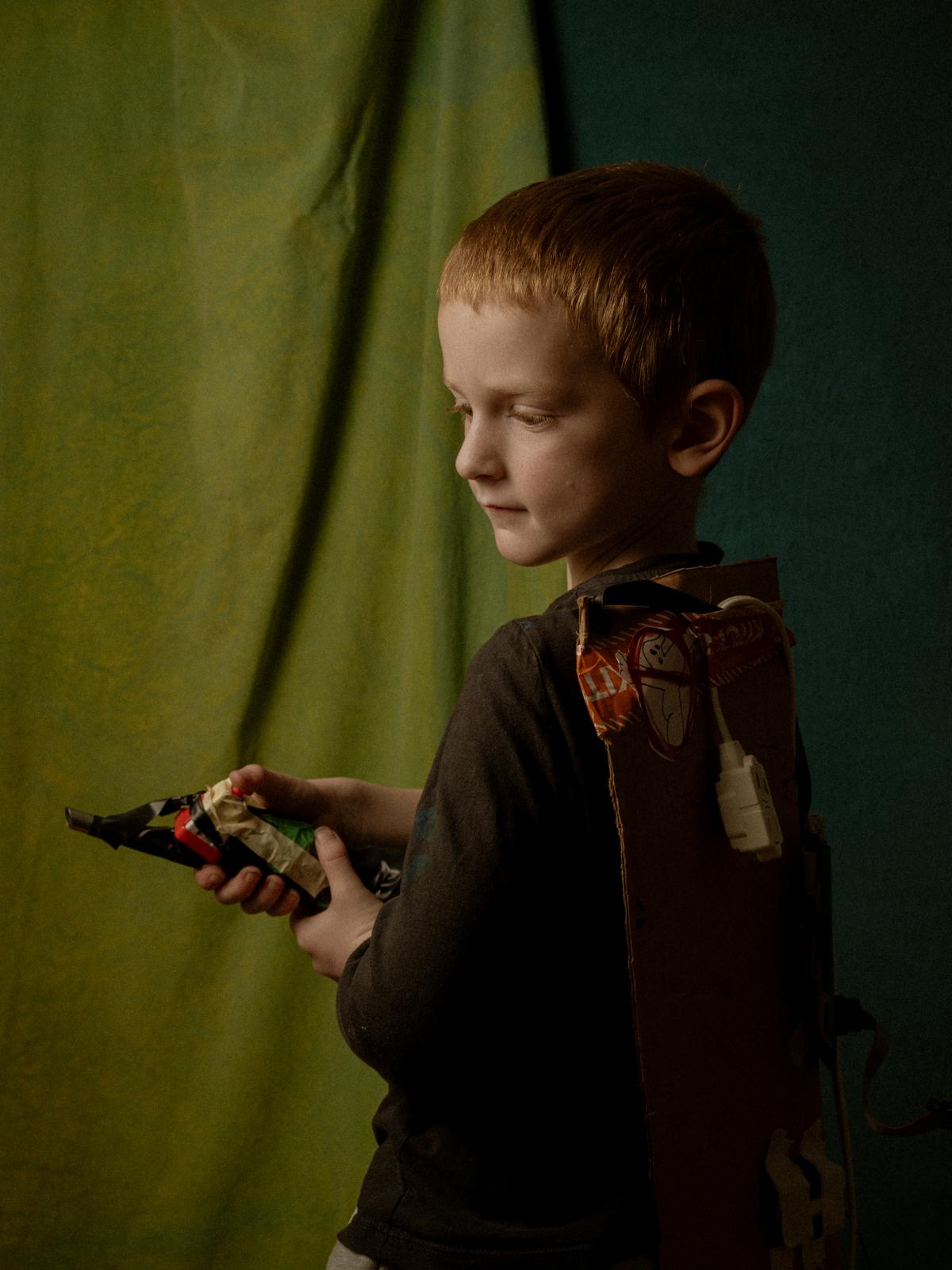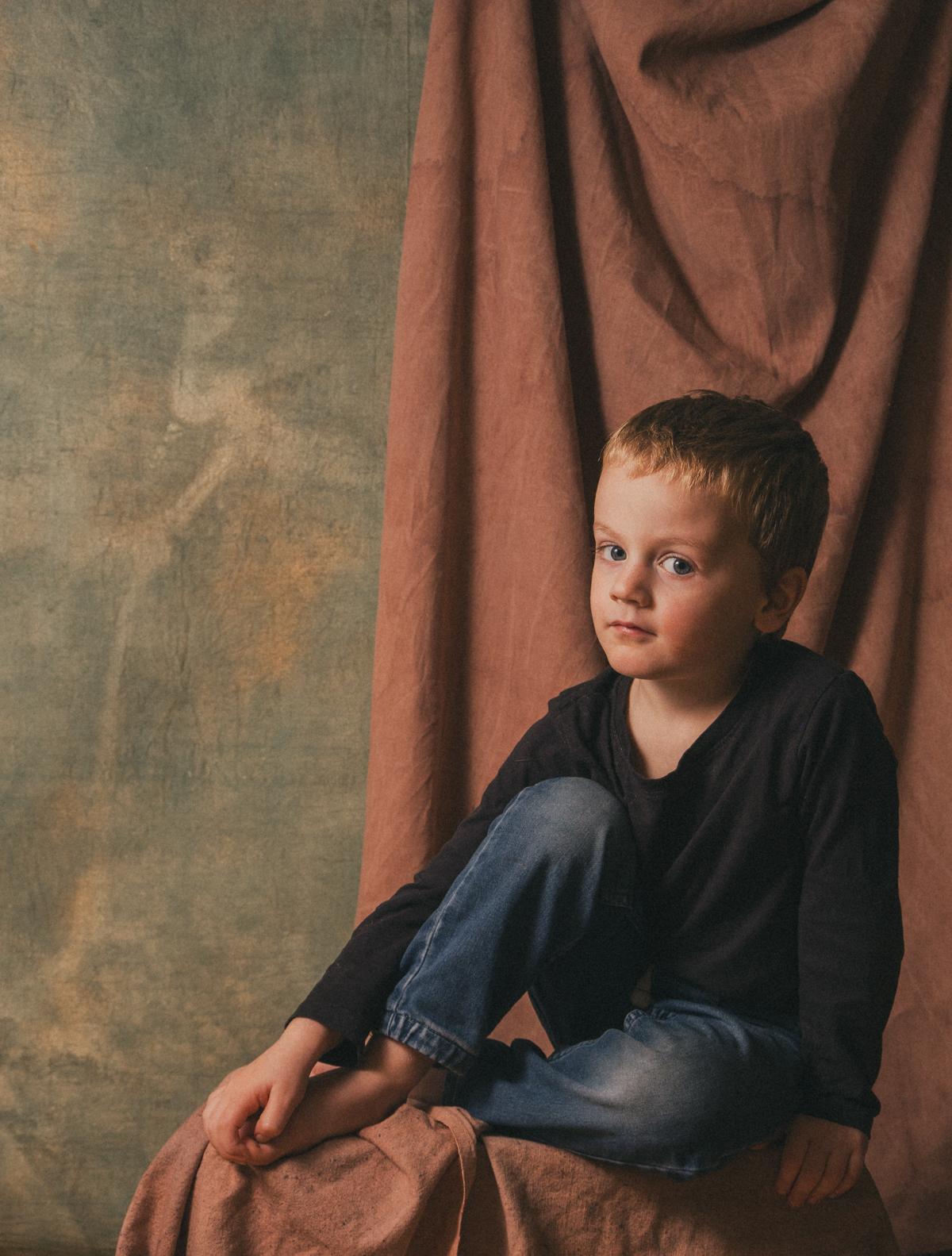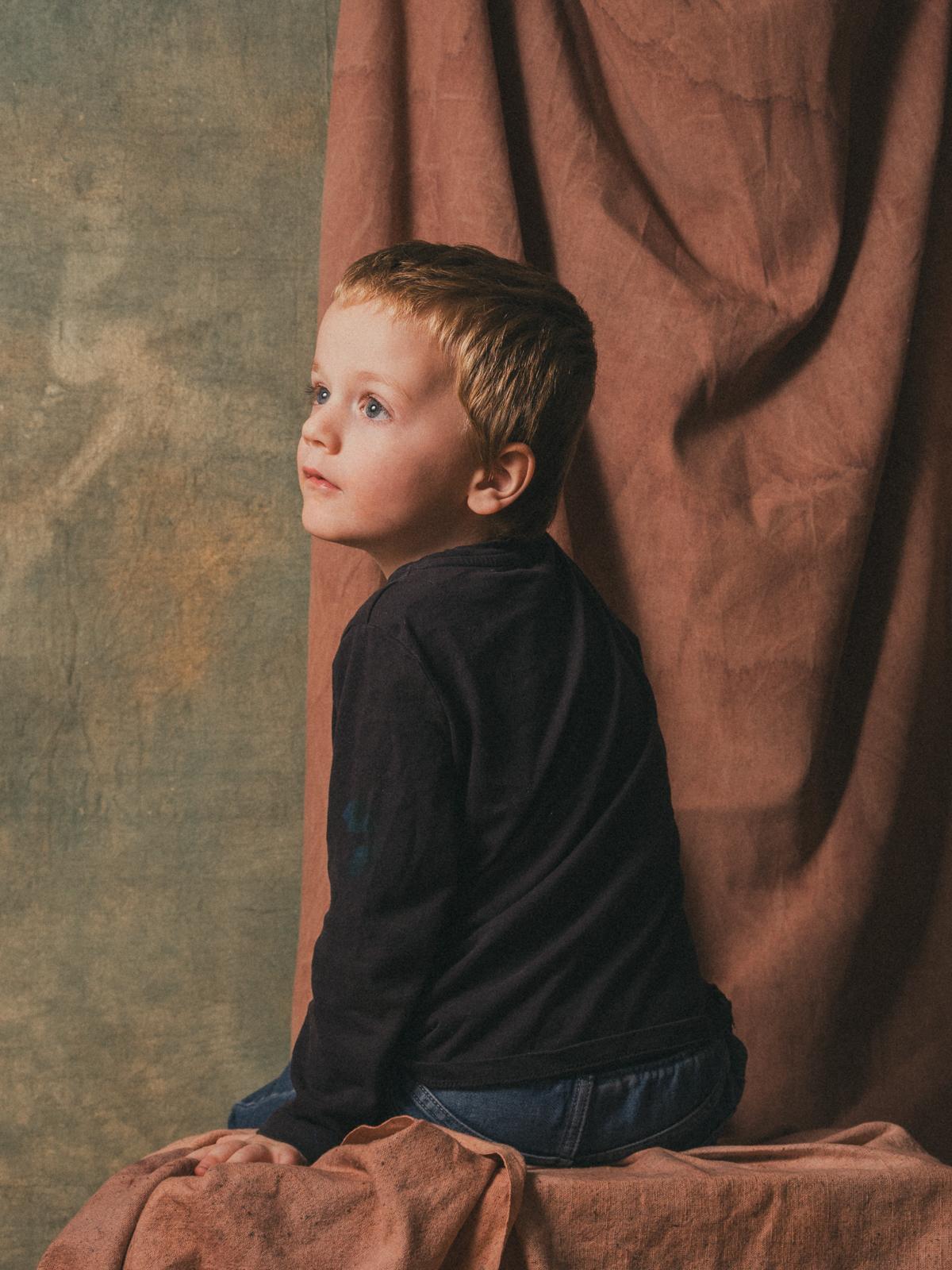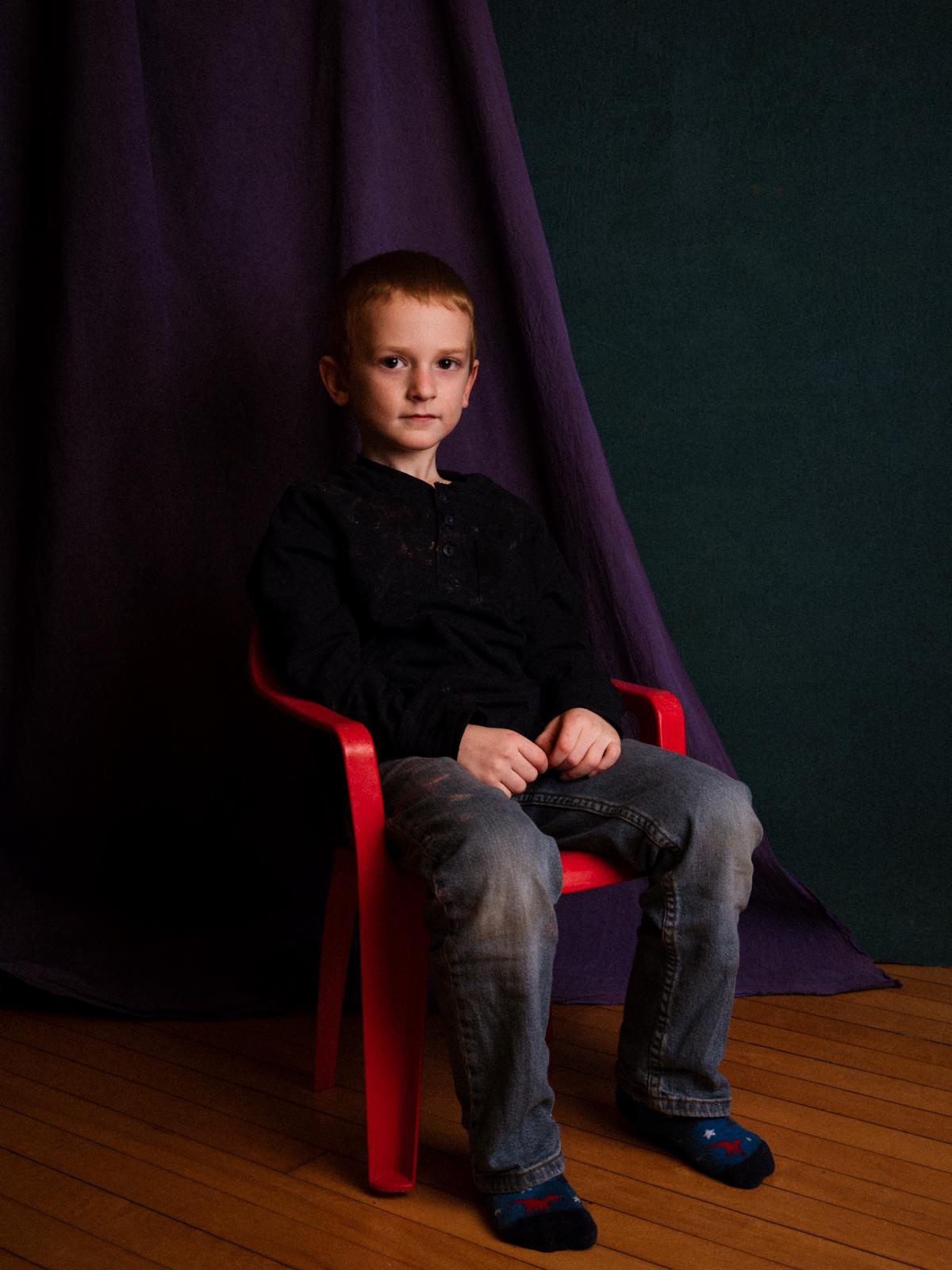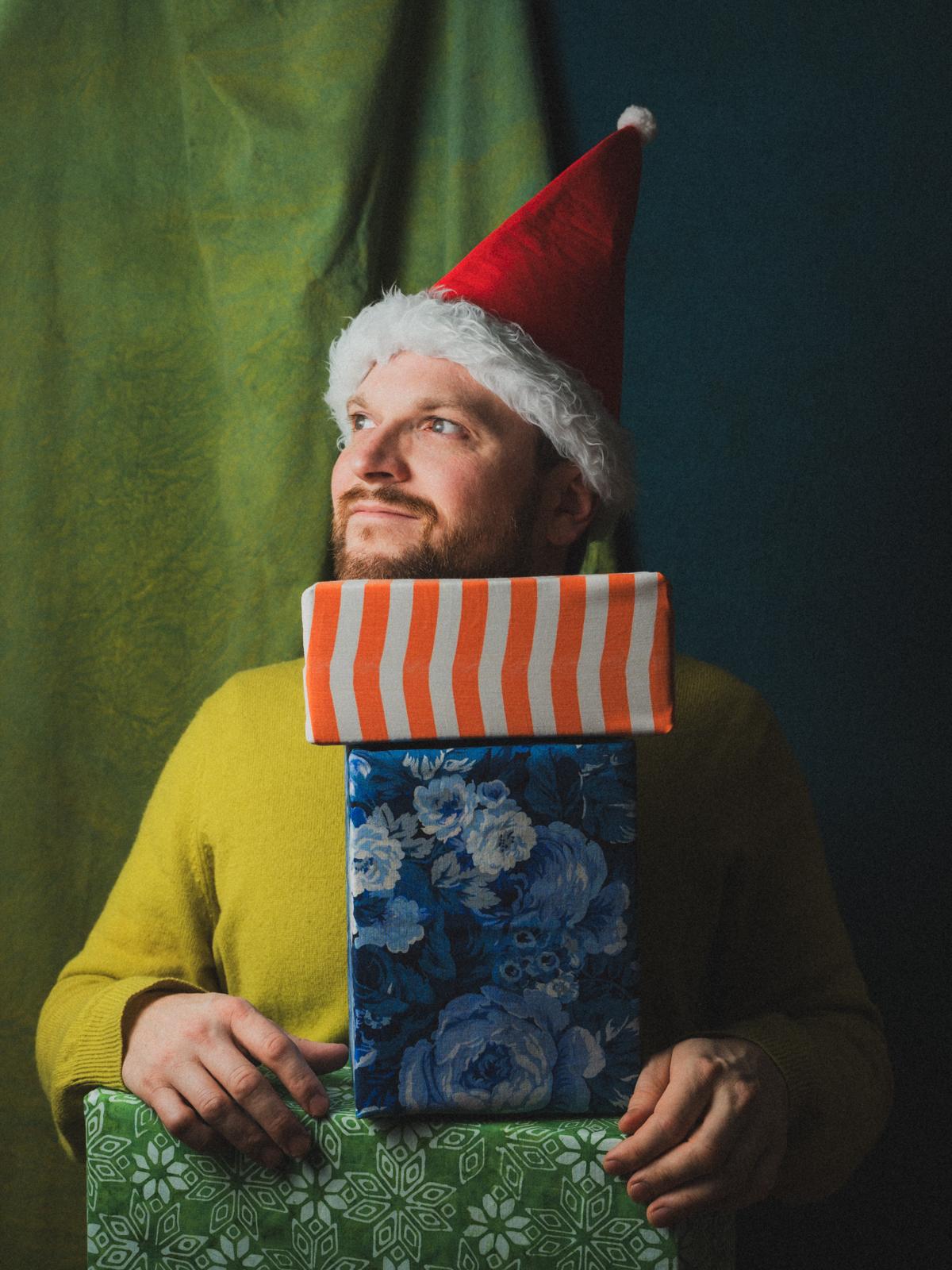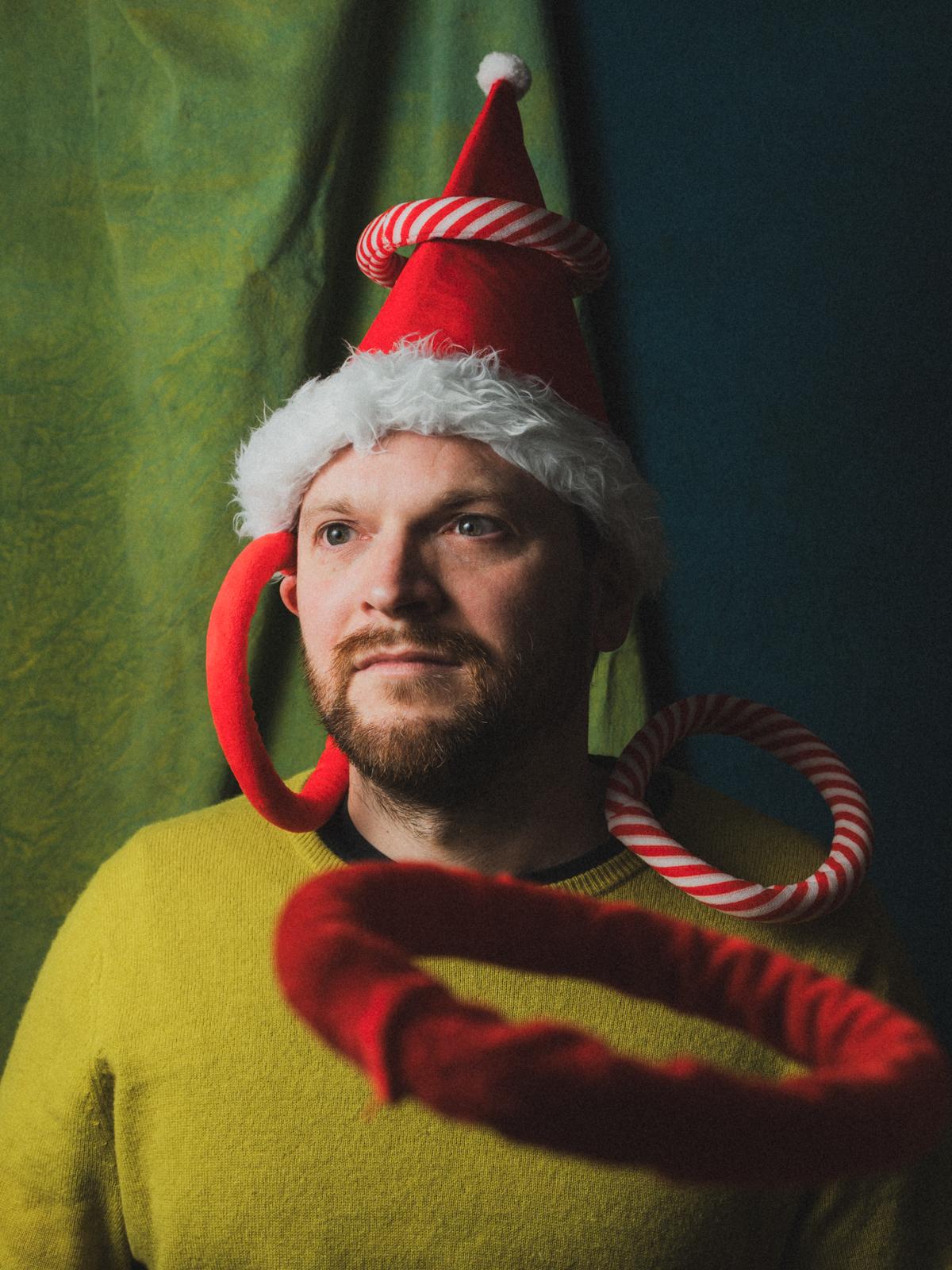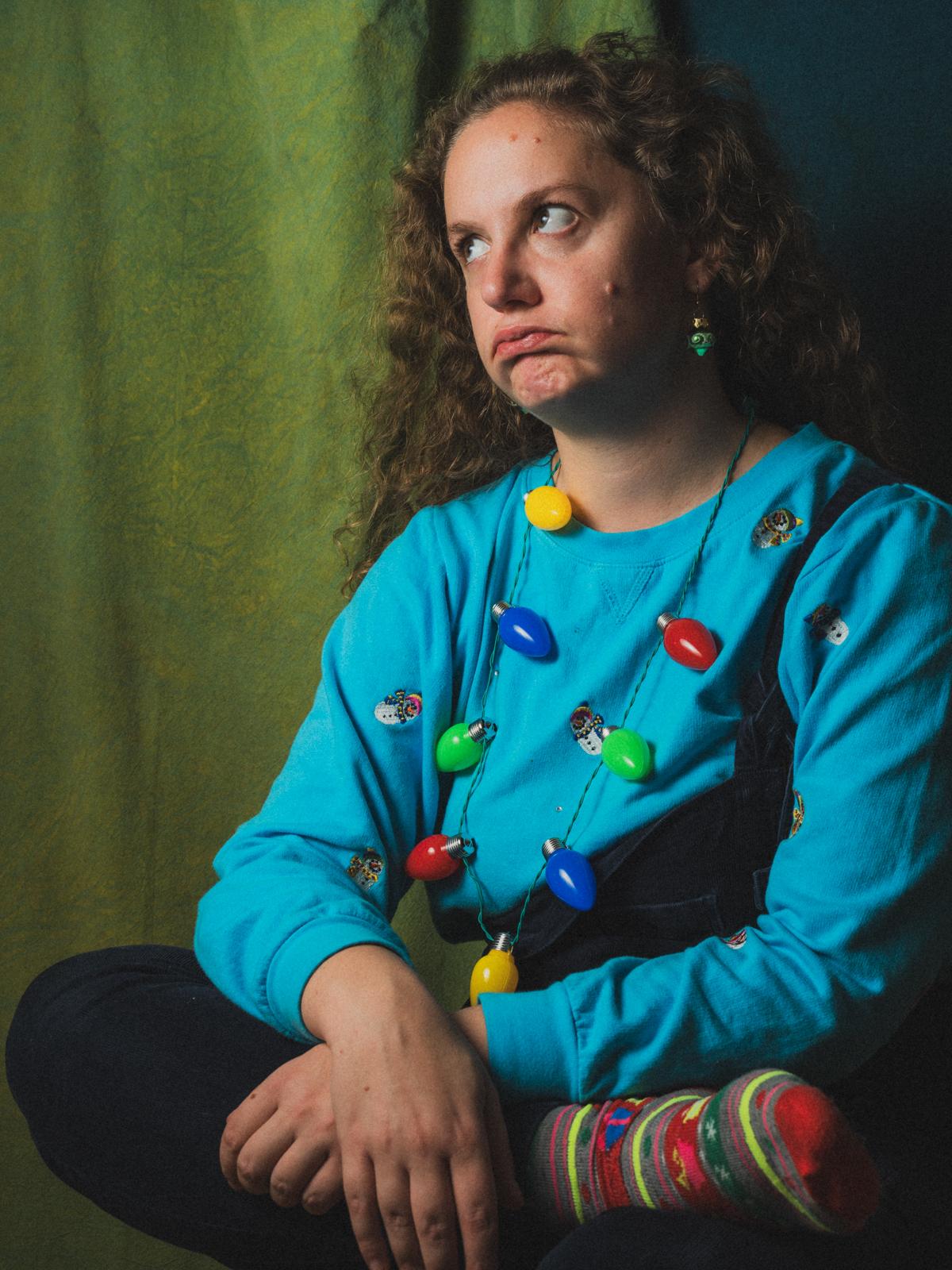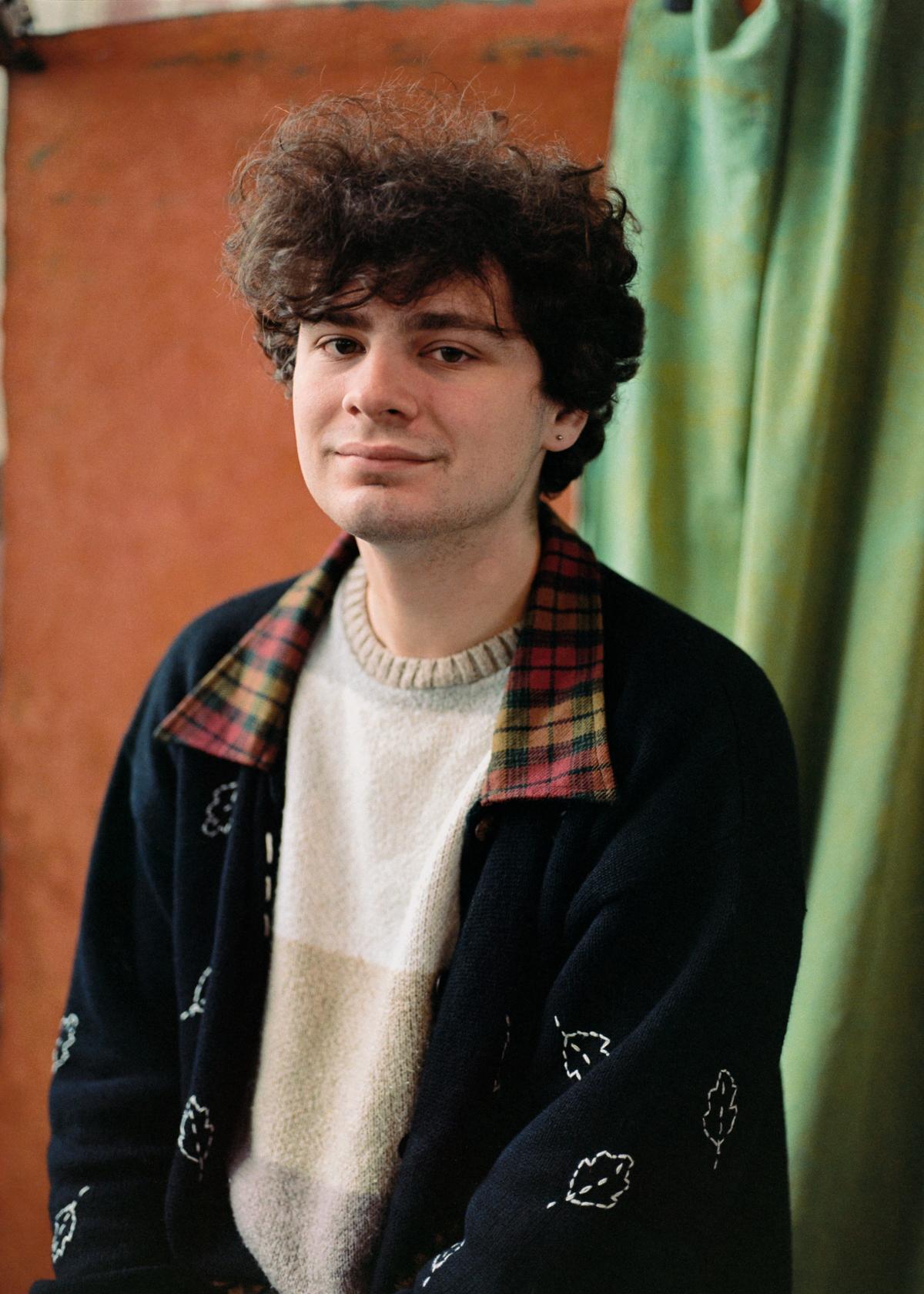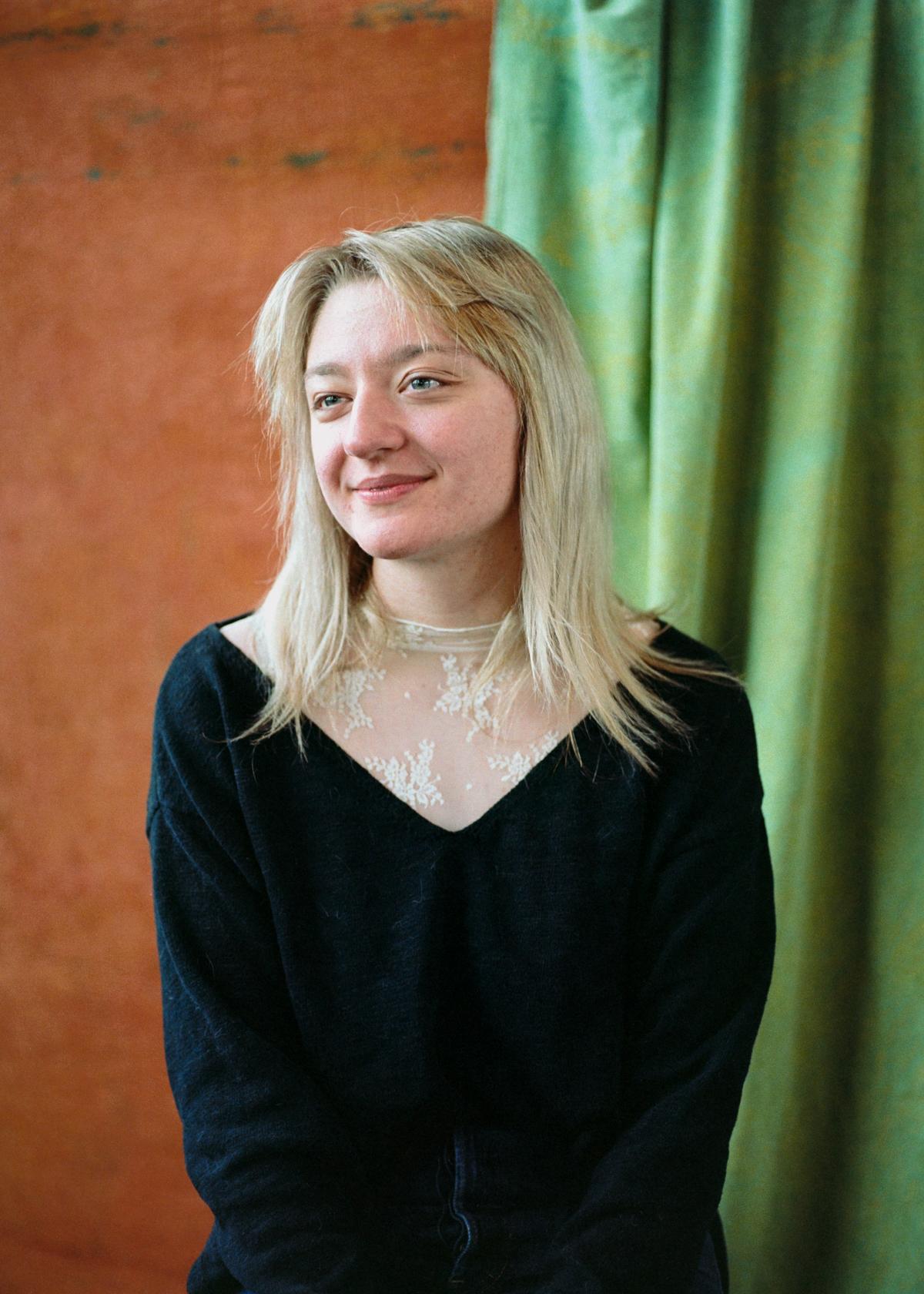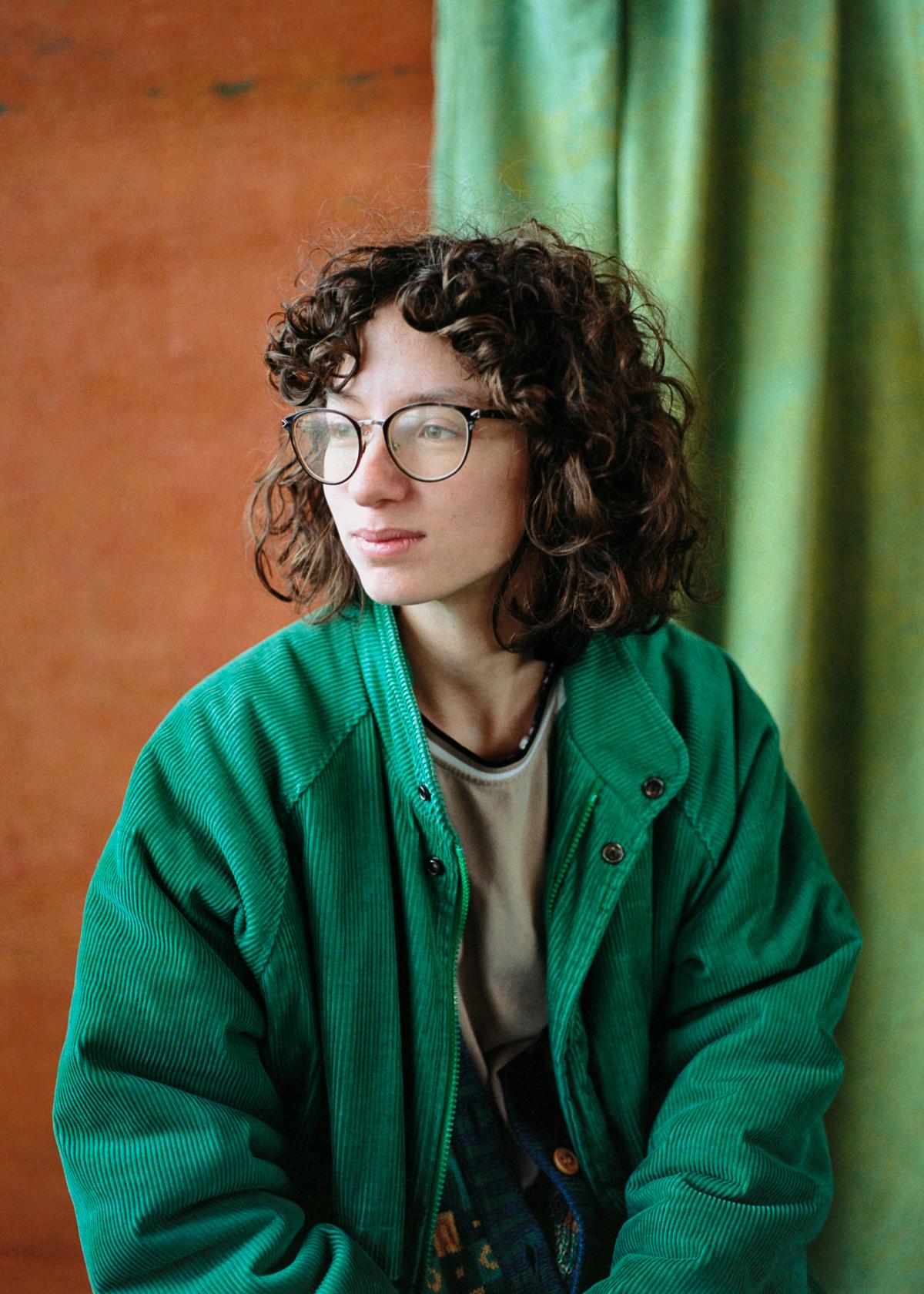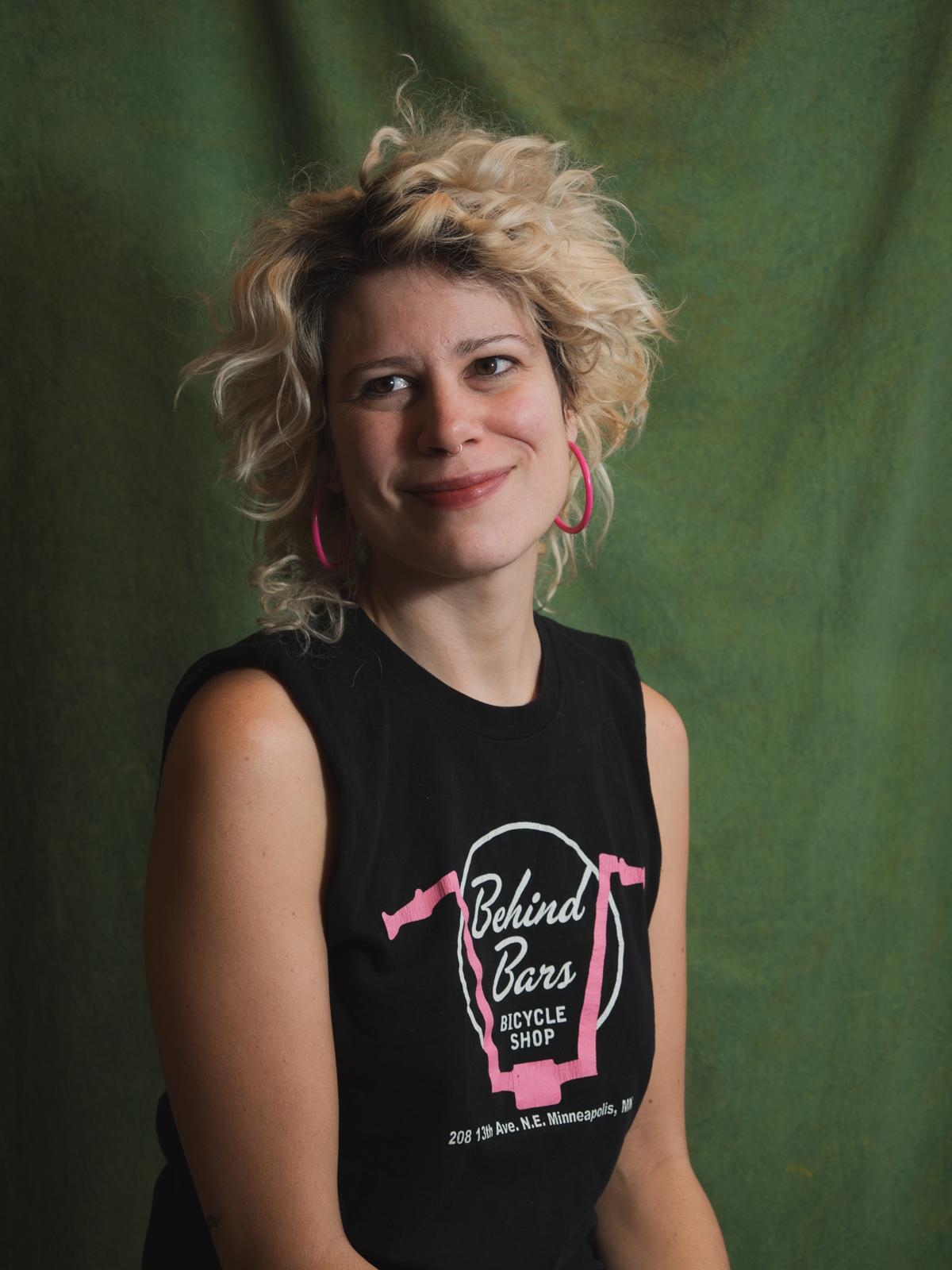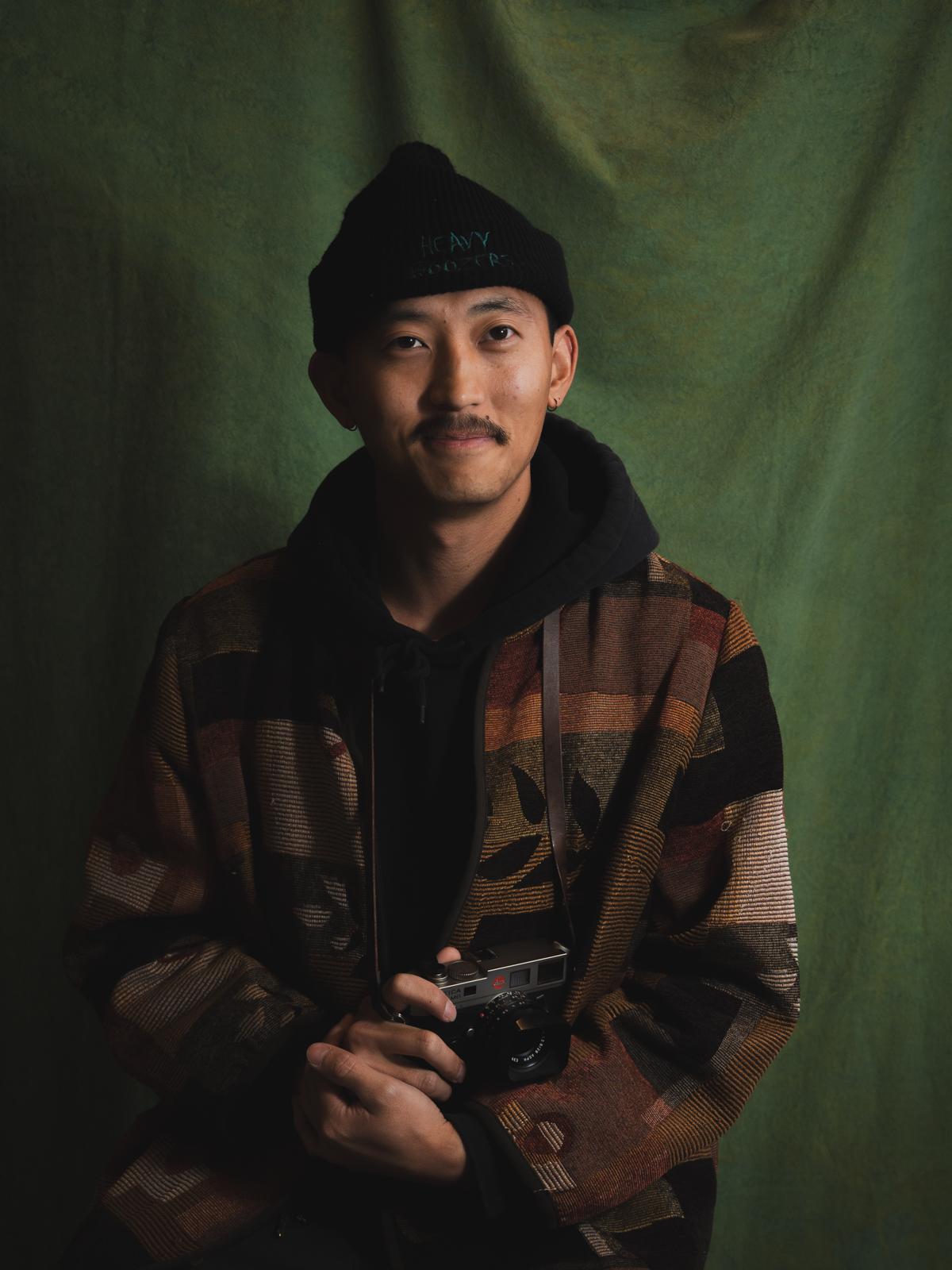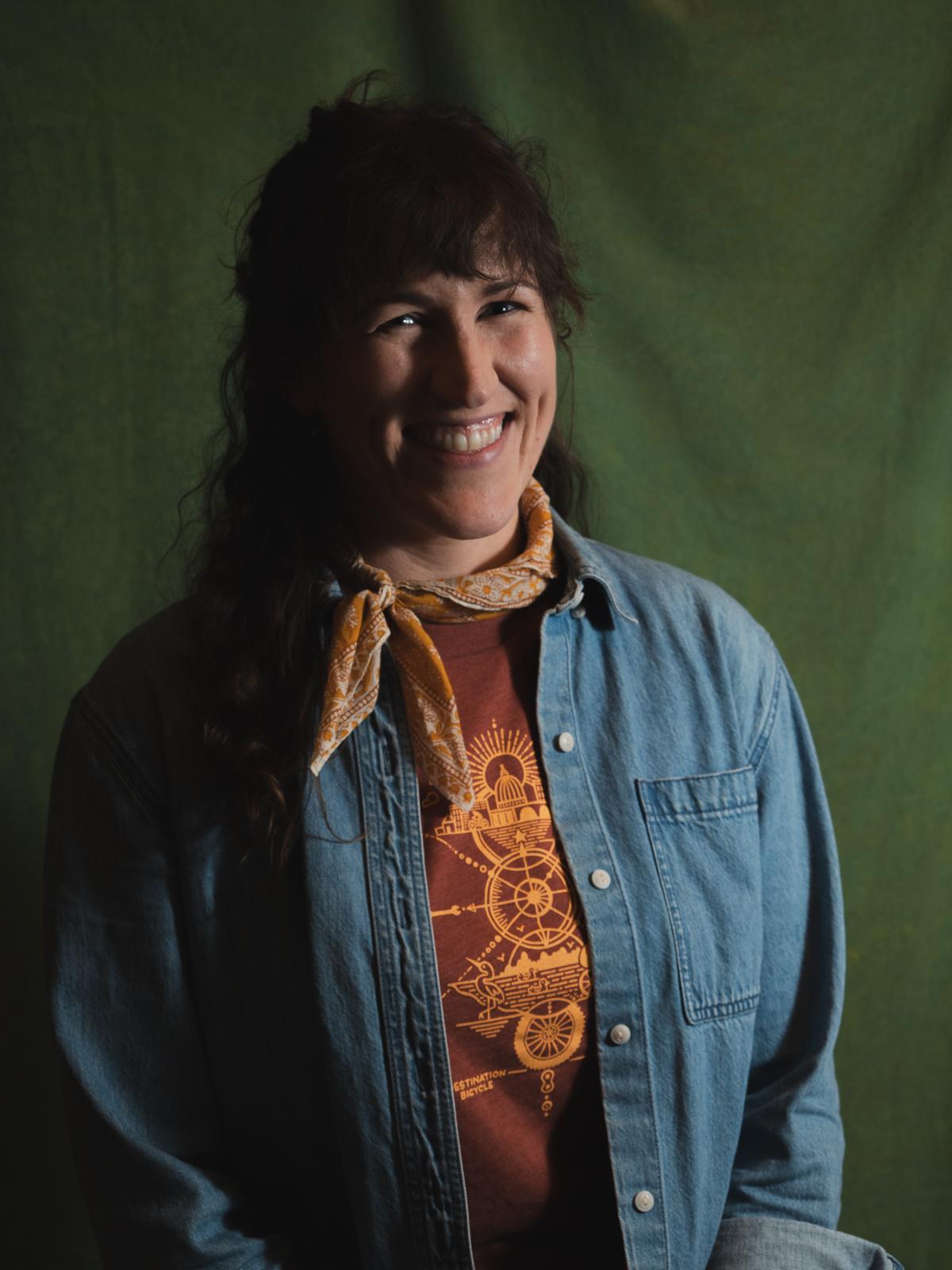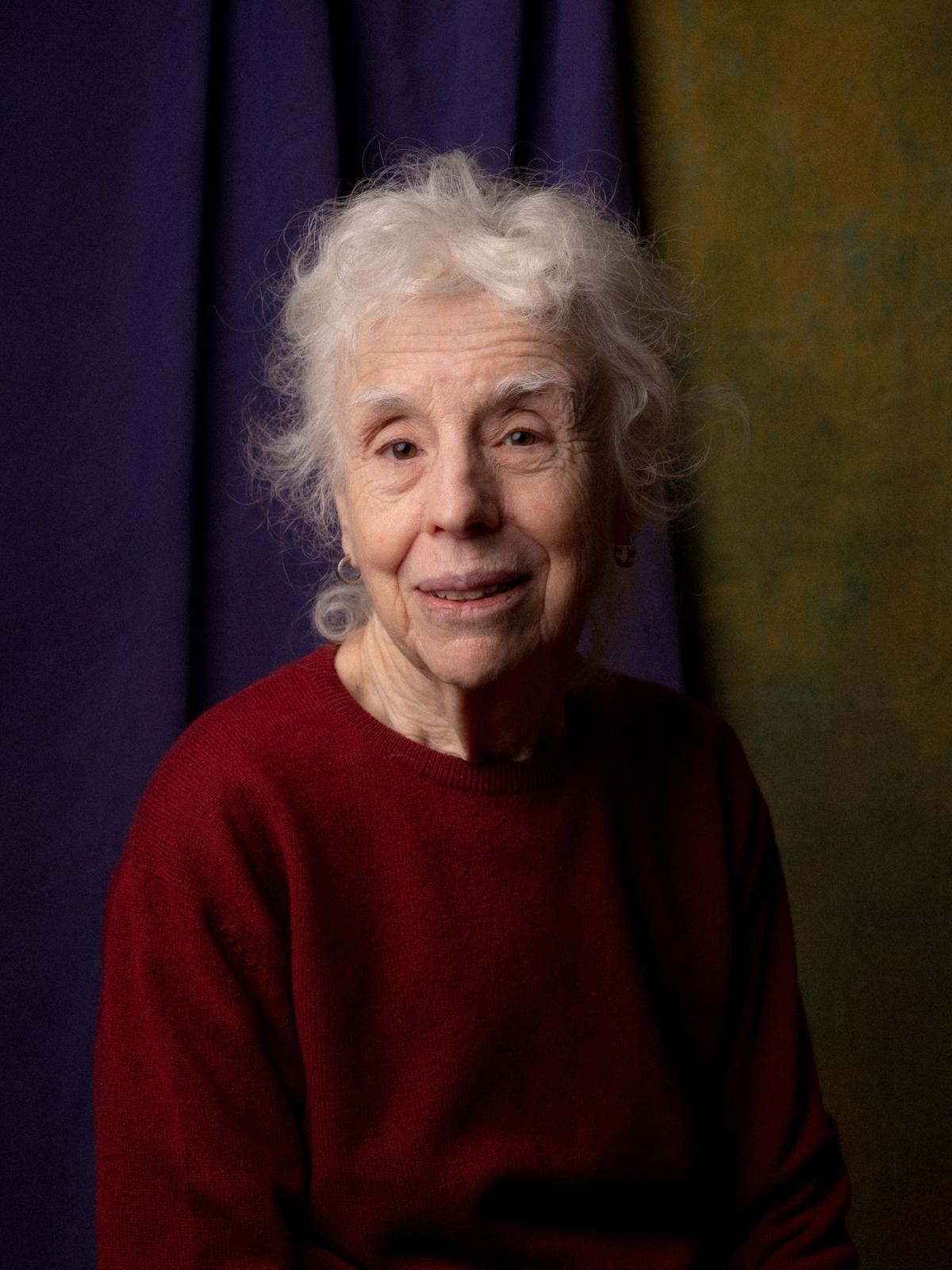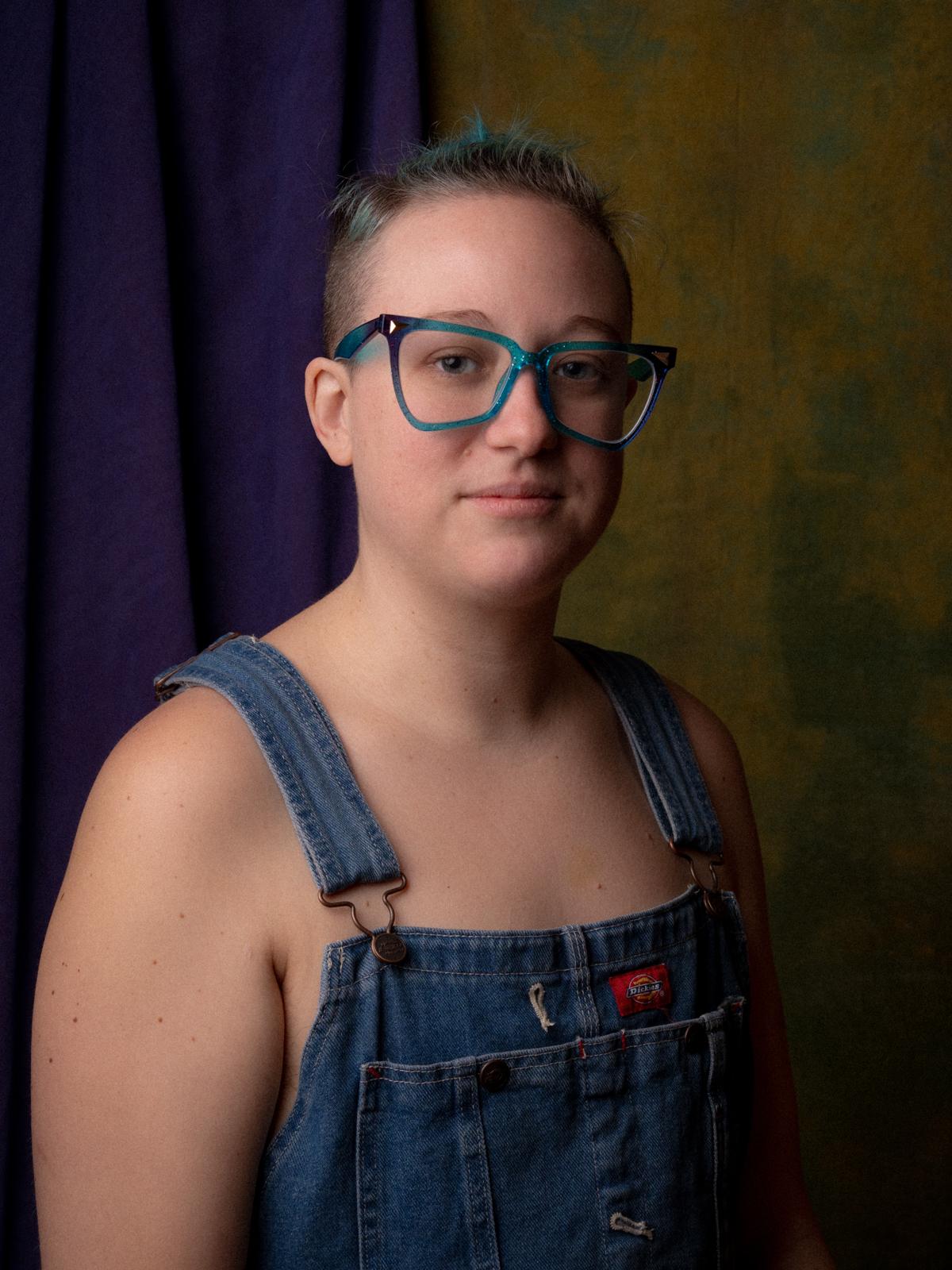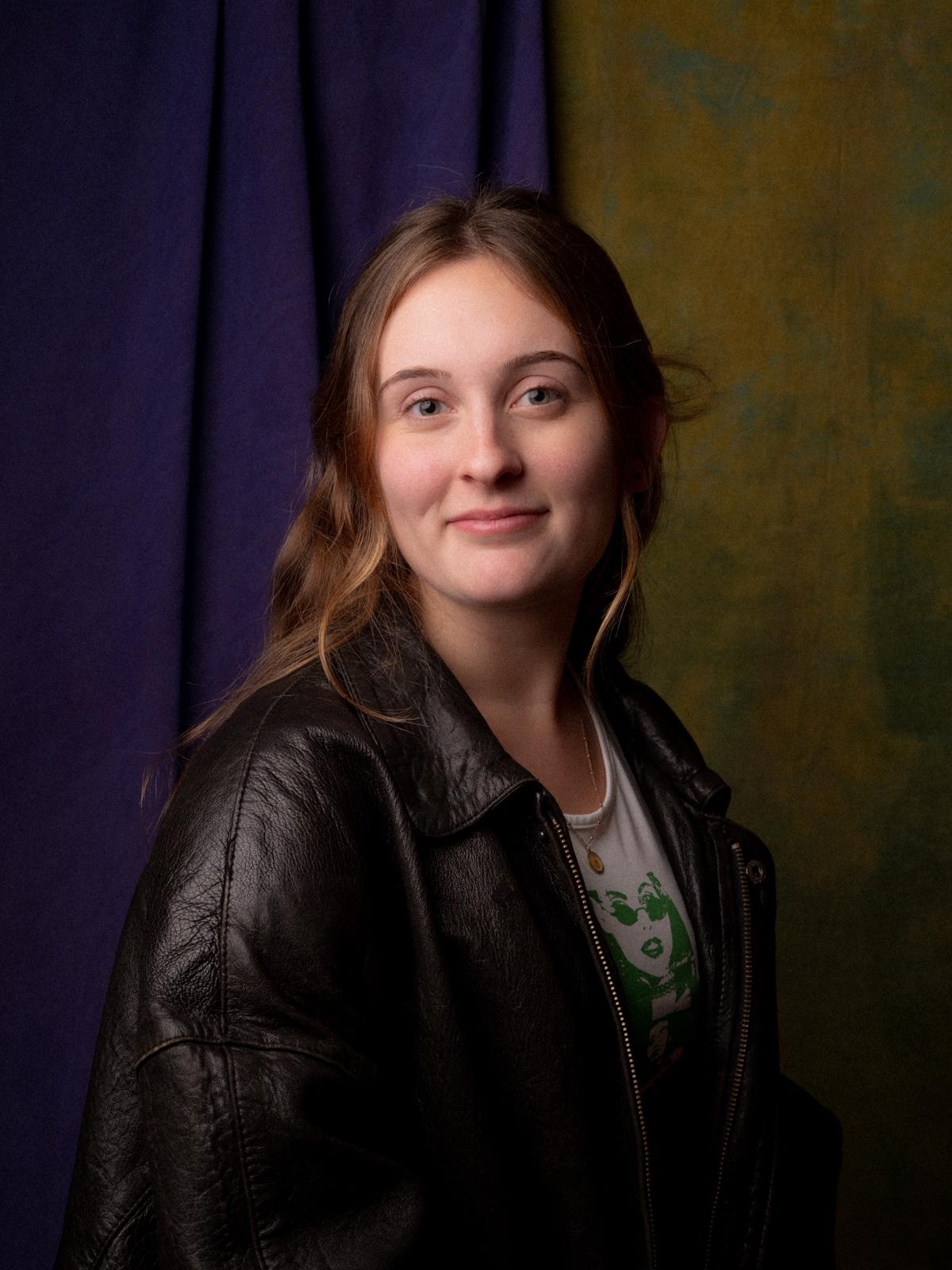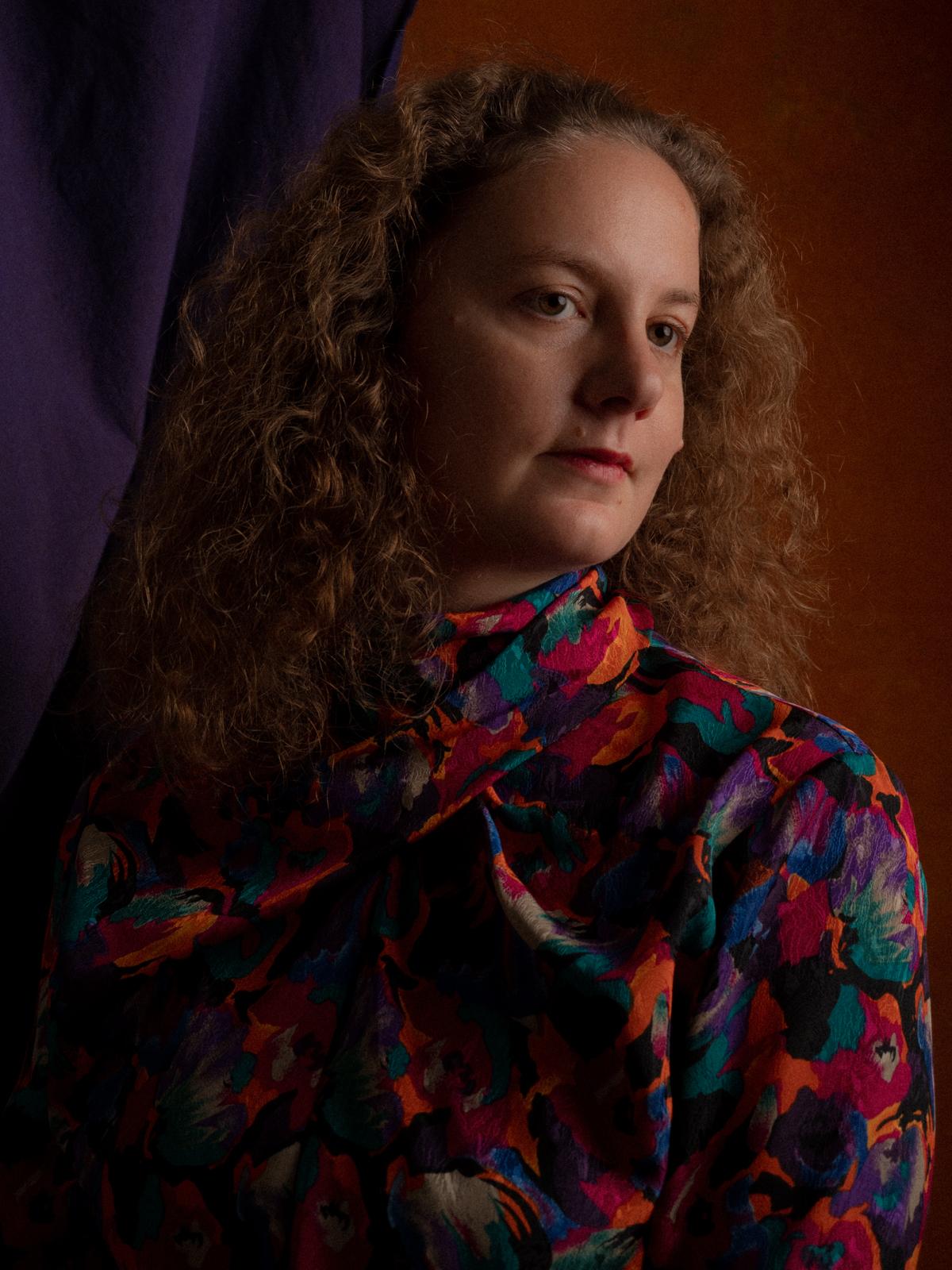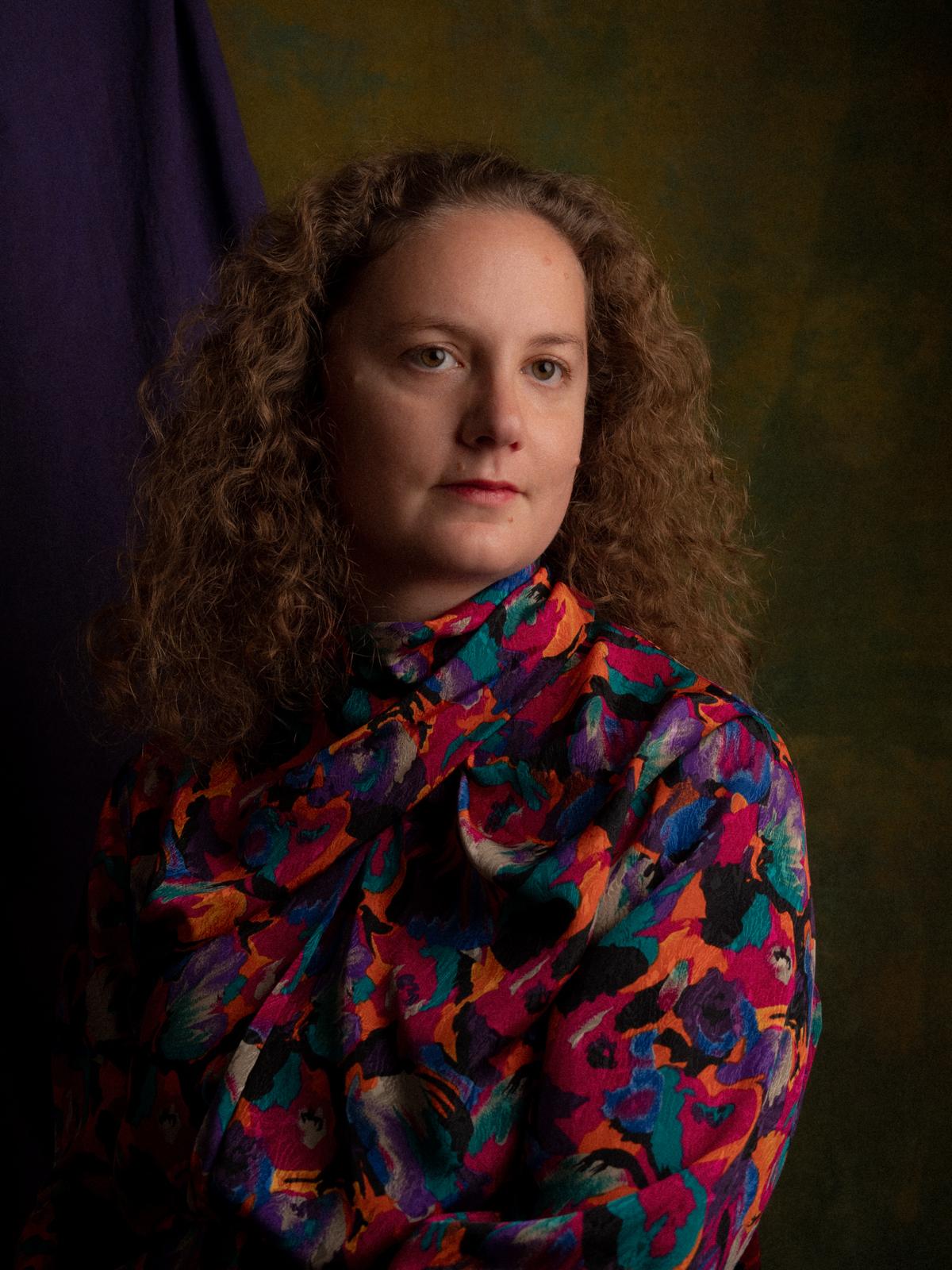And I struggled. But not for the reasons you’d expect.
The light was easy to set up, I relied on a single light source, at 45º to the side, and 45º above me, what’s known as Rembrandt lighting. I don’t remember how I modified it exactly, but I probably diffused it with a simple umbrella.
The background was also very simple. I used two painted backdrops: my hand-painted Terre-de-Sienne canvas backdrop taking the left 2/3 of the frame, and my green backdrop-in-a-bag by Ultraviolet Backdrops on the right 1/3 of the frame – FYI I’m linking Ultraviolet because if you’re on the fence about getting yourself one of their backdrops, I say do it.
No, the part I struggled with was with positioning myself and filling the frame, and getting my expression focused but soft, and the hands visible, but only where they belong, and being at the exact right angle for the light to hit my face where it needed to without losing the right eye behind the nose… The hard part was working with a digital camera, seeing the result, not being happy, and doing it again and again and again, until, finally, when I was really close to giving up, I finally got it.
You read that right, the hard part was working with a digital camera. It brought the perfectionist out of me. With film I just shoot hoping for the best, and when I reveal my images I go with what I got and I’m happy. On digital I cannot let go. But in this particular project, I needed this.
Did you notice the skull ring on my finger? That’s a little post-halloween touch, I borrowed it from Adriano’s trick-or-treating bag 🙂


